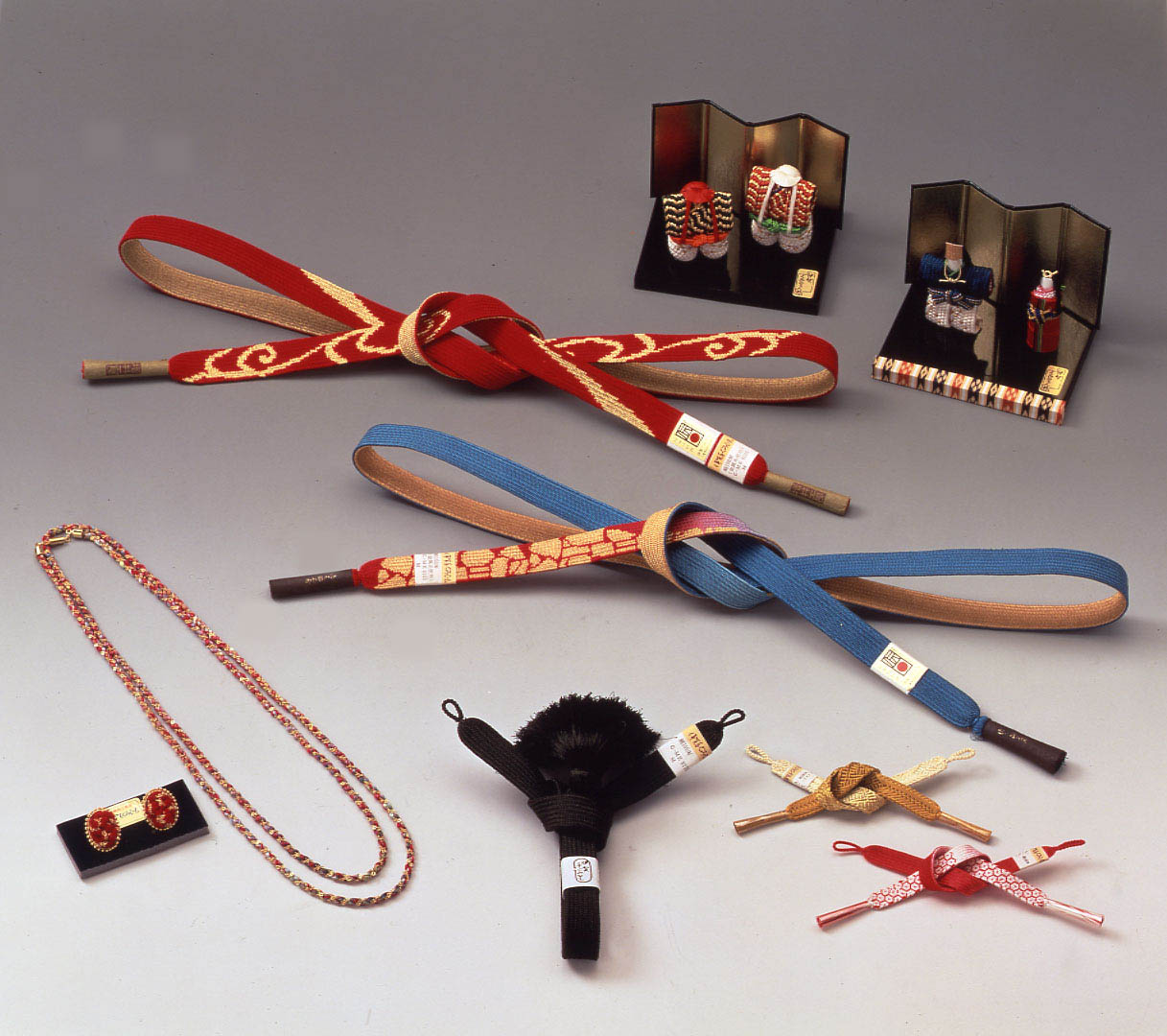Mie Prefecture Braid Cooperative
Iga braids


The origin of Iga braids is old, and it is said that it dates back to the time before the Nara Period.
In the Heian Period, artistic cords such as the flat braided strap of the Karakumi, sutra scrolls, keko (flower basket), and hatakazari (flag decorations) came into use in Buddhist altars and Shinto home shrines, etc..
When the period of the Samurai class began, many cords for armor and swords were produced, and the braided cord culture centered around weaponry was born. When the decree banning the wearing of swords came out and the Samurai class collapsed,
the traditional braiding techniques of the Edo period were passed down to the obishime (decorative string used to hold a kimono sash in place) essential for the kimono, and haori-himo (a string tied across the open chest of a haori coat).
Also, production with braiding machines that make use of traditional techniques, and research progressed as well, and the land of Iga increasingly developed as an area specializing in braided cords. Nowadays, the techniques have been firmly passed down for straps and accessories, etc. that are also in demand in recent years.
Beautifully died silks, with their intermingling lines and unique textures, began to brew a new flavor. The techniques continue unbroken from ancient times. The hearts of many people are joined to form a single braid over a long stretch of time. That is the beauty that weaves the flavor of braids.
Mie Prefecture Braid Cooperative
